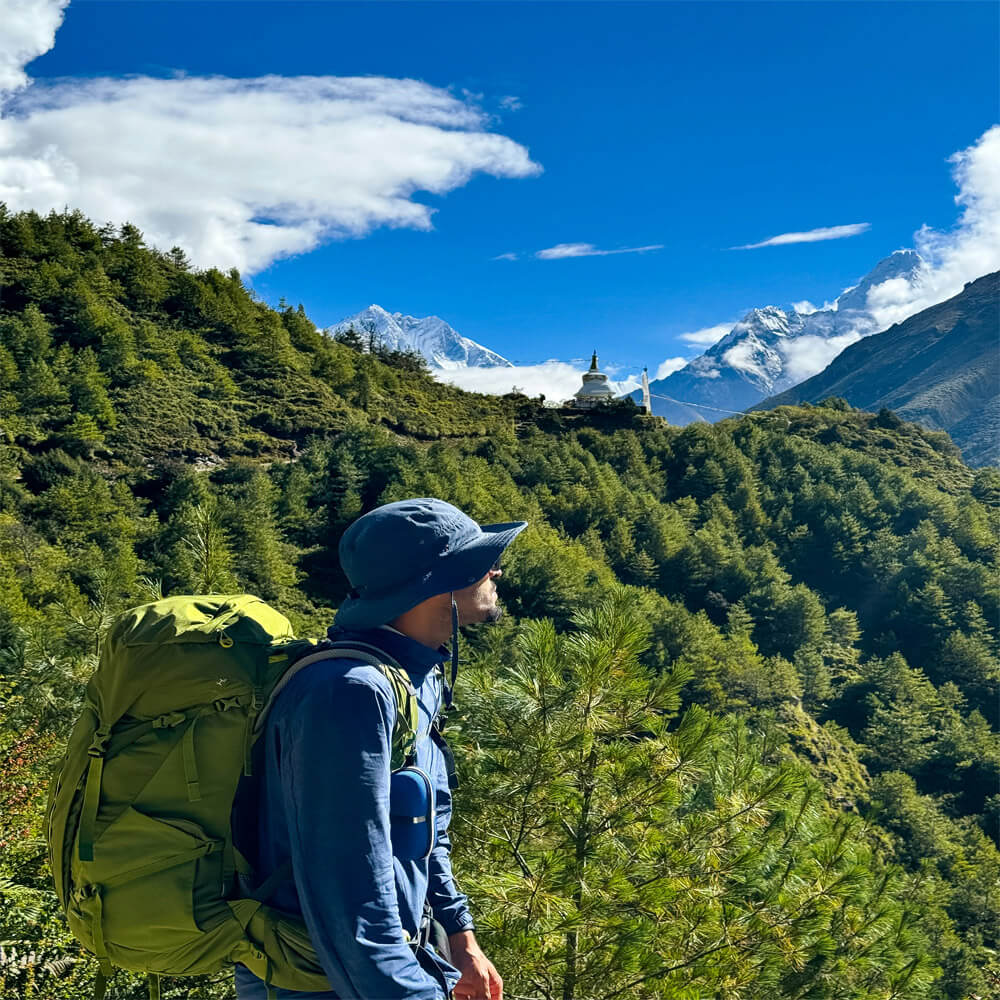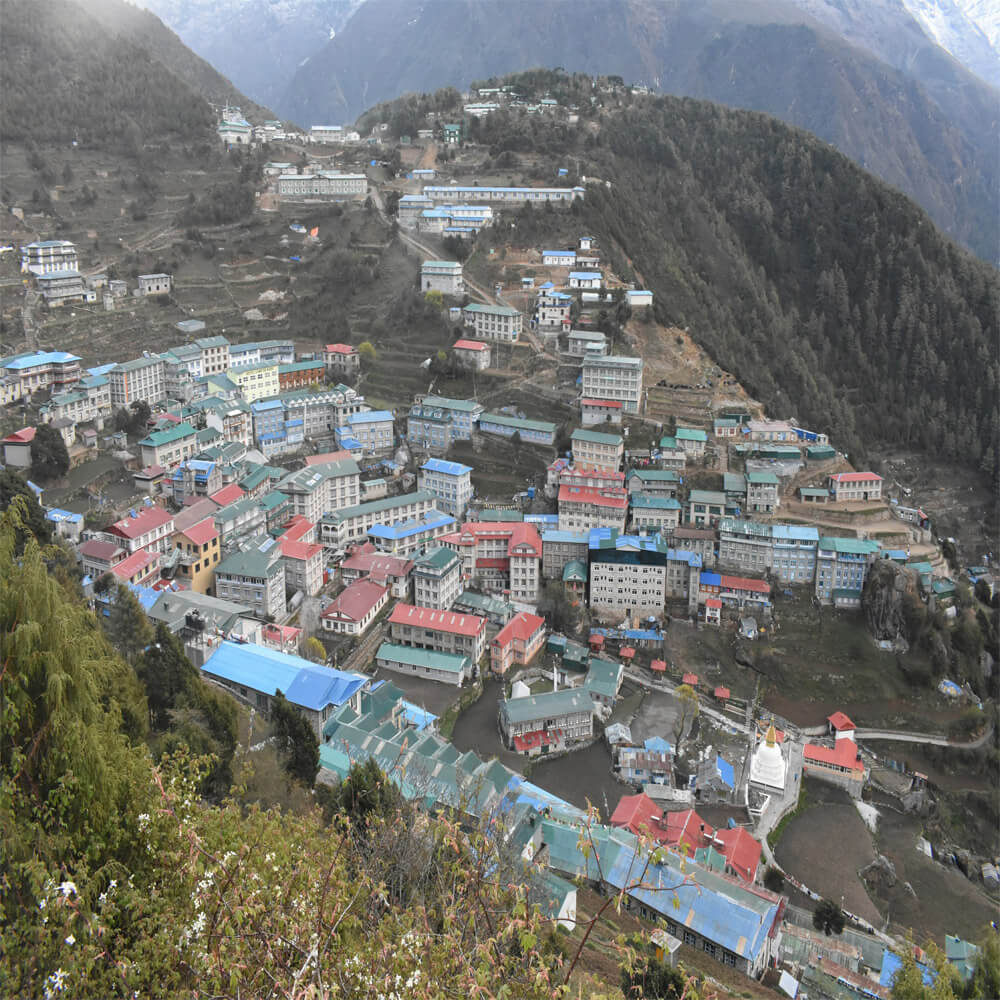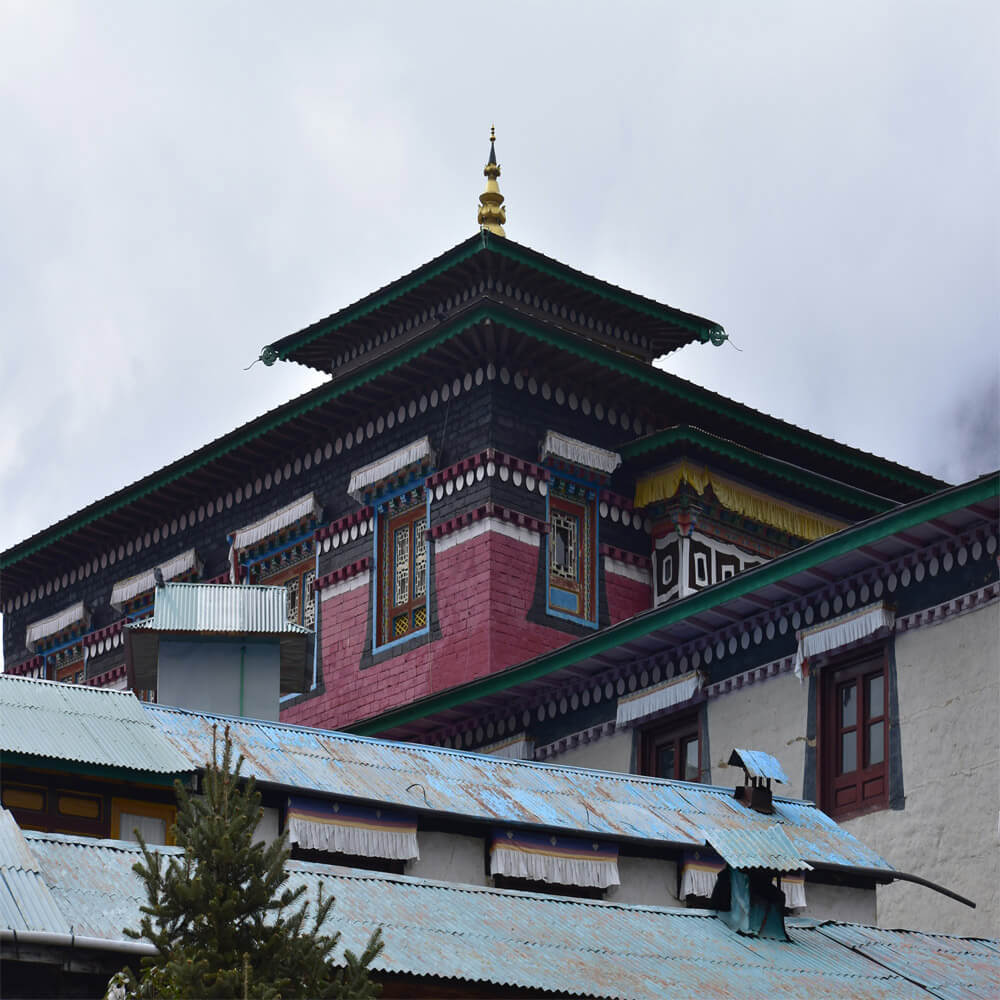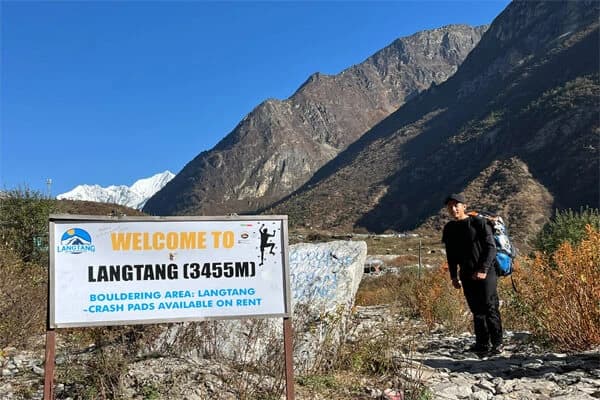Best time to trek in Nepal depends largely on weather, visibility, and the experience you want from your journey. Although Nepal's varied terrain, which includes high Himalayan mountains and verdant valleys, provides a variety of trekking options throughout the year, not all of them are equally appropriate. For trekking in spring season (March to May) and trekking in autumn season (September to November) are the two most popular trekking seasons in Nepal. Clear skies, steady weather, and stunning vistas of snow-capped peaks like Everest, Annapurna, and Langtang are all available during these months.
While autumn brings with it significant cultural festivals like Dashain and Tihar, as well as pristine mountain views, spring brings with it bright rhododendron flowers and pleasant weather. Although Winter (December to February) offers peaceful pathways that can be rewarding, high-altitude hikes are more difficult due to the frigid temperatures and heavy snowfall. Except in places that receive rain shadow, like Mustang and Dolpo, the Monsoon (June to August) delivers lush flora, although rain and leeches make path slippery. Selecting the appropriate time of year guarantees a memorable, comfortable, and safe trek. This blog will walk you through Nepal top trekking seasons, outlining their special benefits and difficulties.
Factors that define the Best time to trek in Nepal
Weather for trekking in Nepal

The weather for trekking in Nepal is the most important factor in choosing when to plan your adventure. Trekkers typically favor times when the mountains are at their best, the skies are clear, and the temperatures are comfortable. You can walk for hours in pleasant weather without getting too hot or chilly. Additionally, it lessens the chance of unexpected storms in the Himalayas, path closures, and airline delays. In addition to ensuring safety, favorable weather improves the trekking experience overall by allowing you to stress-free enjoy the scenery, wildlife, and cultural interactions.
Nepal Trek Weather Conditions and Visibility
Another important factor is Nepal trek weather conditions for visibility. The Himalayan climbs are particularly gratifying because of the clear skies, which provide breathtaking vistas of Annapurna, Everest, and many peaks. Heavy clouds, mist, or rain can reduce vision, making trips less fun and even confusing. Trekkers frequently take their greatest pictures of the mountains when the weather is stable because they appear close and beautiful. You may avoid missing the stunning vistas that have made Nepal renowned by selecting the ideal time of day based on visibility.
Trail Accessibility and Safety
Open and manageable paths are essential for safe trekking. Trails can become dangerous or impassable during certain seasons due to snow that covers high passes or rain that causes landslides. Whether you are ascending steep hills or crossing suspension bridges, dry tracks are much easier to negotiate. In addition to lowering injuries, good trail conditions let you concentrate on the experience rather than the difficulties.
Comfort and Temperature
An important factor in choosing the ideal trekking season is comfortable temperatures. Trekking may be very taxing in extreme heat, particularly at lower elevations. Nights grow hard and high-altitude walking can feel very difficult when it is too chilly. The ideal trekking windows combine cold nights for sleeping and pleasant days for walking, which enhances the enjoyment of the entire trip.
To put it briefly, ideal Nepal trek weather conditions include comfortable temperatures, safe paths, unobstructed mountain views, and clear mountain views. Trekking in Nepal becomes safe and unforgettable when all these elements come together.
Nepal Trekking in Spring season
Spring is often called the ideal season for trekking in Nepal. With beautiful skies, blossoming flowers, and mild temperatures that make walking in the high hills both comfortable and motivating, the mountains come to life from March to May. This season offers nearly everything you might want for a Himalayan expedition, balancing accessibility, safety, and beauty, which is why many trekkers look forward to it.
Natural Beauty and Clear Views
Nepal's trails become vibrant walkways in the spring. Every step is enchanted by the vibrant red, pink, and white blossoms of the well-known rhododendron forest. Trekkers can see snowy peaks like Everest, Annapurna, and Dhaulagiri in all their splendor when the skies are clear. Springtime vistas are unforgettable because of the flowers below and the mountains above.
Comfortable Weather for Trekkers
The ideal season for trekking in Nepal is spring, in part, because of the climate. The average temperature in well-known trekking destinations is comfortable for lengthy walks, and the days are warm but not oppressively hot. Although not as cold as in the winter, nights at higher elevations can be frigid. Trekkers can enjoy their excursion without worrying too much about difficult conditions thanks to this equilibrium.
Best Months to Trek in Nepal
Springtime (March, April, and May) is always the most popular time of year to trek in Nepal.
- March brings the first signs of spring, with flowers beginning to bloom and trails slowly getting livelier.
- April is the peak month, offering the best mix of clear skies, colorful forests, and comfortable weather.
- May stays warm and beautiful, although towards the end, clouds and light rain may start appearing.
Together, these months offer the most reliable conditions for safe and enjoyable trekking.
Popular Treks in Spring
The ideal season for trekking in Nepal is generally considered to be spring, therefore most trails are open and in use during this time. Thousands of hikers visit destinations like Everest Base Camp, Annapurna Circuit, Langtang Valley, and Manaslu Circuit. There are more adventurous alternatives because it is easier to cross even high mountain passes than it is in the winter.
Spring is a celebration of life in the Himalayas, not just a time for trekking. It is genuinely one of the best months to trek in Nepal due to its harmony of accessibility, scenery, and weather. The best time to go is in the spring if you want a trip that is vibrant, full of color and stunning vistas.
Autumn Trekking in Nepal
Autumn is the season that most people dream of going to Nepal for hike. Autumn is considered the high season for Nepal treks because it provides the most beautiful mountain vistas, the most agreeable weather, and the clearest skies. The air feels clean and clear after the dust from the hills has been removed by the summer monsoon. At this point, the Himalayas shine out in all their splendor, gleaming brightly against the deep blue sky.
Autumn is a gift to hikers. The villages are bustling with activity, and the trails come alive with other travelers from all over the world. The mountains appear to embrace everyone with open arms, tea houses are bustling, and guides are eager to take the lead. When it comes to hiking in Nepal, autumn is unsurprisingly the most popular season.
Best Months to Trek in Nepal:
The most common responses to the question of which months are ideal for trekking in Nepal are September, October, and November. Every one of these months has an own appeal.
The trekking season begins in September. The forests are lush and verdant because the monsoon has just ended. Rivers are full, waterfalls are powerful, and the scenery seems alive. Although there may still be some rain in early September, the weather settles by the middle of the month, making it a great time to set off.
The best month for trekking is October. The days are warm, the evenings are cool but not frigid, and the weather is steady. With festivals like Dashain and Tihar bringing color and culture to the trekking experience, this is also the busiest time of year on the trails. October, according to trekkers, provides the ideal weather and atmospheric balance.
November is still rather lovely despite being a little chilly, particularly at higher elevations. Visibility is good and the skies are still clear. On higher passes, snow can begin to fall, enhancing the mountains' natural splendor. Although the weather is still perfect, many hikers prefer November since the trails are less crowded than in October.
Why Autumn Is Called the High Season for Nepal Treks

The best time of year to hike in Nepal is in the autumn because of the ideal weather, scenery, and cultural encounters. You have the best chance of seeing Everest, Annapurna, and other magnificent peaks in all their splendor when the skies are clear. Compared to monsoon or winter, there is a lower chance of landslides or heavy snow on the routes, making them safe. Trekking trails pass through vibrant villages that welcome visitors from all over the world.
Autumn is the ideal time of year for people who want the best experience. Autumn offers you the finest of Nepal, whether you are climbing to Everest Base Camp, ascending the Annapurna Circuit, or discovering more sedate routes like Manaslu or Langtang.
Winter Trekking in Nepal
People typically picture the crowded spring or fall trekking routes when they think of trekking in Nepal. However, the experience is entirely different in the winter. For those seeking something different, it is distinctive because of the bright skies, snow-covered landscapes, and fewer tourists. At this point, off-season trekking in Nepal starts to appeal.
Off-Season Trekking in Nepal
Many refer to winter, which runs from December to February, as the off-season because most hikers stay away from the colder months. But in reality, it is a hidden gem for daring tourists. You can explore the mountains without the hustle and bustle of trekkers during the busiest time of year, along with serene villages and tranquil trails. Even in winter, lower routes such as the lower Annapurna treks, Langtang Valley, and Ghorepani Poon Hill are still reachable. Heavy snow may block the high passes, but the shorter routes are beautiful and safe. Trekking in Nepal during the off-season is also less expensive because tea houses and guides are more readily accessible and frequently give discounts.
Weather for Trekking in Nepal During Winter
The weather for trekking in Nepal in winter is cold but stable. Particularly at higher elevations, mornings and evenings can get significantly colder than freezing. But throughout the day, the skies are frequently clear, providing some of the year's greatest views of the mountains. The trails are dry and easier to walk on, and the air is clear and fresh with little rainfall. Snow enhances the villages and forests, transforming them into enchanted settings. The benefits are enormous for those who can withstand the cold.
Why Consider Winter Trekking?
Winter Trekking is not for everyone, it is ideal for people who appreciate peace and quiet. You can establish a deeper connection with the local culture and environment thanks to the open yet peaceful pathways. Because tea shops are less busy, you will also receive more individualized attention there. Being well-prepared is crucial; layered equipment, warm clothes, and quality footwear make all the difference.
Monsoon Trekking in Nepal
People typically envision the crisp autumn skies or the vibrant springtime flowers when they think about trekking in Nepal. The June to August monsoon season, however, has its own allure. Known as off-season trekking in Nepal or monsoon trekking in Nepal, this journey has its share of difficulties but also offers special benefits that very few tourists are able to enjoy.
Trekking Climate in Nepal During Monsoon
The trekking climate in Nepal changes a lot during the monsoon months. The majority of areas, particularly the lower slopes, experience muddy pathways, frequent rain, and clouds that obscure the views of the mountains. Trekkers must exercise additional caution because some pathways are susceptible to landslides. But the rain also makes the rivers fill with life, the trees become new and lively, and the valleys become a verdant paradise. Monsoon hiking may surprise you if you love the natural world at its most vibrant.
Less Crowded Trails
Quiet routes are one of the main benefits of off-season trekking in Nepal. Popular routes like Annapurna and Everest Base Camp might feel congested in the fall and spring. You have a lot more tranquil experience during the monsoon. You can sense a stronger bond with the villages you visit, teahouses are less crowded, and guides and porters have more time for one-on-one interaction.
Best Treks for Monsoon Season
During the rainy season, not all routes are appropriate. Treks in rain-shadowed regions, such as Upper Mustang, Upper Dolpo, orNar Phu Valley, are the greatest choices. The paths are drier and more dependable in these areas, which are behind the mountains and where monsoon clouds lose the majority of their moisture. These hikes can be ideal hidden jewels for tourists who are prepared to brave the season.
A Different Adventure
You must assume the difficulties of hiking during the rainy season, which include muddy trails, leeches in the lower jungles, and sporadic flight delays. However, it also means the greatest waterfalls, farming communities, and a side of Nepal that most visitors never experience. Off-season trekking in Nepal during the monsoon season may provide more memorable recollections than the beautiful fall skies if you are searching for something new.
Popular Trekking Regions and Their Ideal Periods
Trekking routes in Nepal are diverse and influenced by climate, altitude, and terrain. Selecting the ideal window during the Nepal trekking seasons allows you to take advantage of safer routes, more breathtaking views, and unusual experiences. Here are some important trekking locations along with the best times to visit them.
Everest Region Trekking
The Everest Region is the most visited trekking destination in Nepal with routes that lead to the Everest Three Passes, Gokyo Lakes, and Everest Base Camp. Clear skies during the best Nepal hiking season here make Mount Everest and its surrounding peaks appear breathtaking. Lodges are completely open, paths are less dangerous, and flights to Lukla are more dependable during these periods.
Annapurna Region Trekking
The Annapurna Region offers a variety of treks, from the classic Annapurna Circuit to the shorter Ghorepani Poon Hill trek. Here, timing is essential since it lets hikers avoid muddy trails during rainy seasons or heavy snow on high passes. Trekkers can take in breathtaking vistas of Annapurna, Machapuchare, and Dhaulagiri during the Nepal trekking seasons when the weather is favorable.
Langtang Region Trekking
The moderate Langtang Valley trek, which is closer to Kathmandu, passes through high mountain scenery, Tamang settlements, and forests. Rhododendrons or other flowers adorn the trek, and the proper Nepal hiking season guarantees that trails are free of landslides. Clear views of Langtang Lirung and the neighboring summits are advantageous to trekkers.
Restricted Area Trekking in Nepal
Mustang and Dolpo are in the Himalayan rain shadow, in contrast to other areas. This implies that hikers can still explore them even when rain affects other trails. These areas provide the best cultural and scenic experiences when the weather is more consistent, making jeep routes and trekking trails easier to manage, even if they are less reliant on the typical Nepal trekking seasons.
Because of the country's climate and topography, every hiking area in Nepal has its own rhythm. Knowing when the Nepal trekking seasons are the best or selecting the most dependable Nepal hiking season allows you to plan your trip to balance comfort, safety, and beauty.
Cultural Experiences Linked to Trekking Time
The people and customs you encounter along the road, in addition to the mountains, are one of the secret pleasures of trekking. According to peak trekking season in Nepal often overlaps with major cultural festivals, giving trekkers a chance to enjoy more than just natural beauty. Villagers adorn their homes, eat food, and perform traditional dances during festivals like Dashain and Tihar, which bring the villages to life. Trekkers get a unique chance to experience real Nepali culture while traversing paths that link far-flung communities.
The rythm of local life adds charm in addition to festivals. Depending on when you hike, you might encounter monasteries crowded with chanting monks, children making their way to school on tight trails, and farmers growing or harvesting their crops. Trekking gains depth from these cultural elements, which also make the trip more memorable and intimate.
Selecting the peak trekking season in Nepal enables you to fully experience local customs while also guaranteeing consistent weather and unobstructed mountain views. It is an opportunity to blend cultural interactions with natural beauties to create an experience that is both daring and incredibly human.
Challenges of Off-season trekking in Nepal

When talking about trekking climate Nepal, it’s clear that weather conditions greatly influence safety and overall trekking enjoyment. Trekking in Nepal is possible all year round, however there are more difficulties during certain seasons than others. When trekking outside of the most reliable times, hikers should be ready for erratic weather, challenging terrain, and potential health hazards.
Snow and cold temperatures at higher elevations are two of the main obstacles. In addition to cutting off trails and obstructing mountain passes, heavy snowfall can raise the risk of hypothermia or frostbite. Similar to this, low visibility on overcast or stormy days can make it harder to navigate and lessen your chances of taking in Nepal's breathtaking mountain views.
Rainfall presents another set of difficulties. Trekking may be slow and exhausting when trails get wet and slippery. Leeches are a regular nuisance during the rainy season in some areas, particularly those with lower elevations. In addition to interfering with travel arrangements, landslides and overflowing rivers can be dangerous.
Another factor to consider is accessibility. Weather-related delays in transportation are common in remote places, impacting both road and airline timetables. Planning is crucial because adverse conditions might exacerbate health problems like altitude sickness.
Trekkers that use a Seasonal trekking guide Nepal are better able to understand these difficulties and plan appropriately. Travelers can choose appropriate routes, prepare appropriately, and modify their pace by being aware of the challenges they may encounter. Trekking during unfavorable seasons can be more difficult, but for those who are up for the task, it may also offer more peaceful paths and distinctive cultural experiences.
Tips for Nepal Trekking Seasons
Book Early
In Nepal, the busiest trekking seasons are autumn and spring. Well-traveled routes such as the Annapurna Circuit and Everest Base Camp quickly fill up. You may save last-minute worry by making your reservations for flights, permits, and lodgings in advance.
Pack Smart
Though temperatures in the mountains might fluctuate quickly, the weather is usually consistent. Bring layers: a rain jacket for unexpected downpours, insulated coats for chilly evenings, and light clothing for warm days. It is essential to have a decent pair of trekking shoes.
Stay Hydrated
Dehydration occurs rapidly on Nepal's walking paths due to the clear, dry air. Use water purification tablets or filters and always keep a refilled bottle with you. Another way to lower your risk of altitude sickness is to drink enough water.
Acclimatize Properly
Altitude may have an impact on everyone, even during the ideal trekking season. When trekking beyond 3,000 meters, make sure to schedule rest days. Take your time, pay attention to your body, and avoid hurrying through the schedule.
Respect Local Culture
Increased interactions with locals are another benefit of the best season. Respect monasteries, temples, and local customs; dress modestly; and learn a few Nepali greetings. Little actions provide significance to your trip.
Conclusion: Best trekking season in Nepal
Although trekking in Nepal is unique throughout the year, the ideal time of year can enhance the experience. Every season has something special to offer, whether you prefer the crisp autumn skies, the blossoming springtime paths, the peaceful allure of winter, or the verdant monsoon landscapes. You can make the most of your trek by carefully planning.
Based on their tastes, level of health, and preferred method of travel, our company Nepal Trekking Routes assists tourists in choosing the ideal season. You can hike with confidence in any season if you have knowledgeable guides, personalized routes, and dependable assistance.
Selecting us means hiking alongside experts who have a thorough understanding of the local culture, climate, and mountains. we not only plan the logistics but also ensure that your trip is memorable, safe, and pleasurable. The season that corresponds with your ideal adventure is ultimately the finest.
Frequently Asked Question
What is the best season for trekking in Nepal?
The best season for trekking in Nepal is autumn (September–November) and spring (March–May). The weather is clear, skies are blue, and trails are at their most beautiful.
Can I trek in Nepal during winter?
Yes, winter trekking (December–February) is possible at lower altitudes. The higher trails can be too cold and snow-covered, but short treks around Kathmandu or Pokhara are great options.
Is trekking safe during the monsoon?
Trekking is possible in the monsoon (June–August), but heavy rain, slippery trails, and leeches can make it difficult. Rain-shadow areas like Upper Mustang and Dolpo are better choices.
Which season is less crowded?
Winter and monsoon are the least crowded seasons. If you want peace on the trails, these times are ideal, though weather may be challenging.
Do I need a guide in all seasons?
While trekking independently is possible, having a guide is especially helpful in off-seasons for safety, navigation, and local knowledge.










